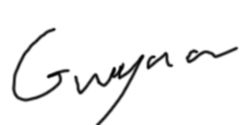Broken Threads Anyone?
WARNING! – Almost any thread used in weaving can break.
 I suspect that those of you who have been weaving for awhile could share at least one “you should have seen what happened when a thread or threads broke” story. Usually not funny at the time but can make for a great story or great teaching = learning tool.
I suspect that those of you who have been weaving for awhile could share at least one “you should have seen what happened when a thread or threads broke” story. Usually not funny at the time but can make for a great story or great teaching = learning tool.
Over the past 15 years plus of teaching, I’ve noticed that the default response to broken threads in women and men differs. Women first apologize, then explain what they did wrong and quickly ask for help. Men swear, suspect the equipment and then try to rebuild the loom. (Note! Grandma taught me that “Always and Never haven’t happened yet” so the above sentence needs to be kept in context.)
I wish I could say it took just one broken thread to teach me the best lesson, but my approach was the normal guy one. Saying oh “( ____ )“ then working on fixes, tricks, gimmicks or the loom.
Acceptance and Avoidance I find is the best approach for dealing with broken threads. One of the tricks that many of us use is the old pull and snap test when checking a new yarn being selected for warp. Lately we’ve had some calls about the 8/2 Homestead yarn. Folks give it the old Pull and Snap Test and wow! it breaks. The yarn is soft spun, it has 3,000 yds per pound: Breaking Can Be Expected.
However, it’s great for toweling: soft, absorbent, lots or colors and not too expensive. Acceptance dictates that knowing it can break, we then use our Avoidance skills (good technique) in order to use the yarn.
Using good weaving techniques allows any weaver to use fine yarns and minimize broken threads. First realize that whatever your project is there can be hundreds of threads in the warp. That single thread Pull and Snap Test won’t work the same with more threads in your hand. Try it with 10- 30 – 50 threads.
What causes the threads to snap on the loom isn’t usually just tightening the tension. For me it seems to happen while weaving or beating. When weaving with a loose warp thread, that thread can either hang down or float up a bit. Shuttles hit the single thread and the pull and an inadvertent snap test happens. Stick shuttle openings on the ends will find loose threads every time. Tighten an individual loose thread with a 1oz weight on a large paper clip. Slip the paper clip over the loose thread at the back of the loom and it will be self regulating.
Another problem is knots in the warp. They can get caught in the heddle eye or be worn down by the reed. Keep knots out of the warp by doing the starts and end of all at the end of the warp.
 Selvedge threads are almost a separate world. Look for draw-in. The strongest fattest yarns in the world will be worn down by friction. Extra thread in the dent can help, a plied yarn wears better than a single, and a temple can help minimize draw in. When using the 8/2 Homestead yarn we use in our towel kits I have a particular selvedge treatment that works well. If I’m sleying yarns single sley (one per dent), I increase the sley to two threads every other dent from the edge. It looks like the sample here: Left Selvedge |..|.|..|.|..|.|.|.| then single to right.
Selvedge threads are almost a separate world. Look for draw-in. The strongest fattest yarns in the world will be worn down by friction. Extra thread in the dent can help, a plied yarn wears better than a single, and a temple can help minimize draw in. When using the 8/2 Homestead yarn we use in our towel kits I have a particular selvedge treatment that works well. If I’m sleying yarns single sley (one per dent), I increase the sley to two threads every other dent from the edge. It looks like the sample here: Left Selvedge |..|.|..|.|..|.|.|.| then single to right.
Here’s a sample: 18epi in 12 d = sley of 1-2 so the selvedge would increase the single threads only. |..|.|..|.|..|.|..|. would become |..|..|..|..|.|..|.|..|.|
Trying new threads, thinner or fatter, means that the weaver has to adjust to the thread and make it work. Every time you weave something, take it as an opportunity to add to your weaving skills list. It’s not just the problems that you learn from but also what went right. Something done right last month might just be what’s needed this or next month.
What mistakes, repairs and yes, broken threads do, is they allow/force me to think outside the box. I’d be interested in your broken thread story….
Mike




I have the same trouble with you.Since I have used Digital Yarn Tension Tester, I don’t worry when the weaving breaks anymore. Highly recommend to you~
I have found that the use of temples prevents broken selvedge threads. I have installed rolling temples on two of my looms and wouldn’t ever want to be without them.
Also, a warp that is wound onto the warp beam with even tension prevents some thread breakage as well. If an end is too tight, it is more likely to break under weaving tension.
My young son thought he would help me by cutting the warp between two book marks. Yeah, got him stopped a third of the way across. Tell me how to fix THAT.